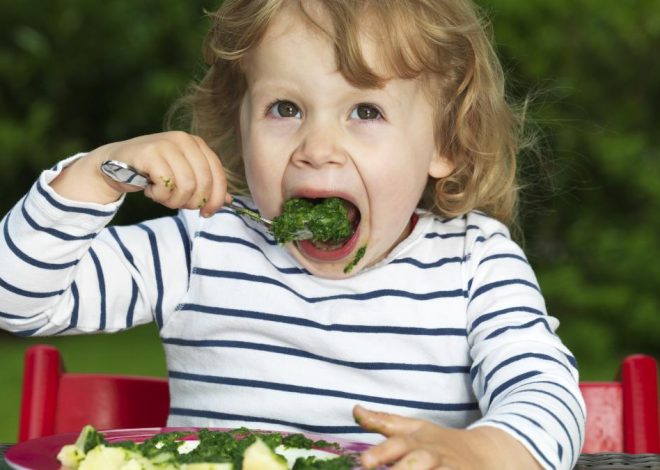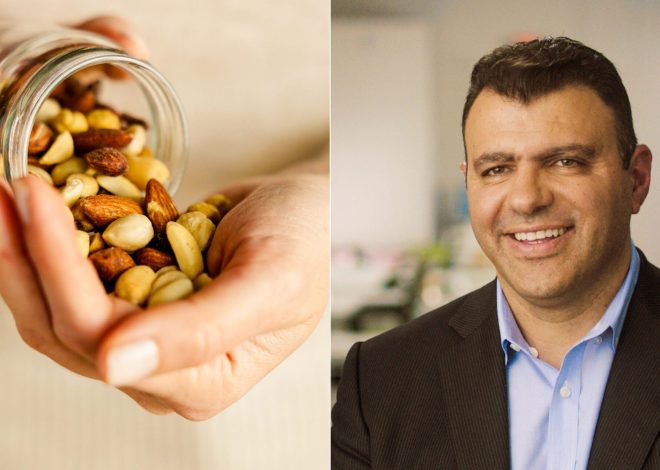
Clean Eating: How healthy is the popular diet?

What is clean eating?
“Clean eating originated as a kind of lifestyle concept in the USA,” says Antje Gahl, nutritionist from the German Nutrition Society. Several cookbooks and many hashtags and likes later, the concept has also been popular here for some time. Translated, the term means something like “clean eating”. Clean here means: avoiding industrially manufactured products that often contain added flavorings, colorings, preservatives, sweeteners, flavor enhancers and sugar.
Natural, fresh food is the credo of clean eating. You eat “clean” when your menu consists primarily of unprocessed and whole foods such as fruit, vegetables, herbs and salad. These provide the body with valuable fiber, vitamins and minerals. In combination with whole grains, pulses and high-quality oils and fats, they form the basis of a “pure” diet.
With clean eating, you are also allowed to eat up to six meals a day. “Clean eating is therefore not defined as a diet, but rather as a long-term form of nutrition in which you consciously avoid fast food, convenience foods and even sweets,” explains Gahl.
Which foods are allowed when eating clean?
The most important thing is that the food is as unprocessed as possible. The so-called NOVA food processing groups provide guidance on what is and is not allowed when eating clean. This four-stage system was developed by the Brazilian nutritional doctor Carlos Monteiro and classifies food according to its degree of processing – from unprocessed to highly processed products:
Foods from levels one and two are desirable for clean eating, with the exception of sugar. Levels three and four should be avoided as much as possible. However, the system also has weaknesses: Meat, for example, is grouped in the lowest level. Sugar, if it is not in highly processed foods, is in the second level. However, almost all nutritional recommendations say that both should be used sparingly. The NOVA system is therefore not suitable as a sole dietary recommendation. However, it does help to measure the consumption of highly processed products.
Reading the ingredients list of products is an important step in implementing this diet: emulsifiers, colorings, flavor enhancers, etc. are taboo. This also applies to drinks. In addition to water, unsweetened teas or diluted fruit juices are also possible with clean eating. Soft drinks and energy drinks are avoided.
How can you prepare food when eating clean?
Clean eating does not mean that you can only eat raw food. You can fry, boil and bake, but at a moderately high heat. Steaming and blanching are ideal, as these processes preserve most of the nutrients.

So you can’t avoid cooking for yourself when it comes to clean eating. Good planning helps, both when it comes to meals and when shopping. For example, if you plan your meals for a week in advance, you know exactly what you need in the supermarket. That way, only that ends up in your shopping basket. Pre-cooking meals for several days – so-called meal prepping – also makes it easier to implement. If you already have something healthy, you don’t have to resort to ready meals when you’re in a hurry.
How many meals does clean eating allow?
Clean eating involves eating up to six meals a day. In addition to breakfast, lunch and dinner, snacks are also integrated into everyday life. This is intended to prevent cravings. Eating breakfast every day is particularly important. Many people recommend filling yourself up and starting the day with lots of energy, but Antje Gahl says: “If you can’t eat breakfast, you shouldn’t force yourself. It varies from person to person.”
Is clean eating the same as the Stone Age diet?
Definitely not. The Paleo diet only allows foods that are believed to have been available in the Paleolithic era: for example, vegetables and fruit, meat, fish and seafood, eggs, nuts and honey. Clean eating, on the other hand, also includes pulses and grain products. In addition, while the Paleo diet is often very meat-heavy, most clean eaters focus on a diet that is heavily based on plants.
Is clean eating particularly expensive?
“Clean eating is not necessarily particularly expensive,” says Antje Gahl. Of course, there are foods that are expensive anyway, such as nuts, seeds and fish. Fruit, vegetables, mushrooms, pulses and whole grains, on the other hand, are relatively inexpensive foods. And industrial products can also cost a lot, as processing can be expensive and time-consuming. “It’s not always the money, but rather the time that you invest in clean eating,” says Gahl.
Are superfoods part of the clean eating menu?
Exotic superfoods such as high-fiber chia seeds or vitamin C-rich goji berries are very popular in clean eating, but they have to be imported from afar and are often much more expensive than our local heroes. Instead, using local superfoods is not only more sustainable, but just as healthy: linseed, blackcurrants and blueberries are also very high in fiber.
Does clean eating help you lose weight?
It is not possible to say in general whether clean eating can help you lose weight. If you have previously eaten high-calorie convenience foods, you can probably lose a few kilos by switching to clean eating. If you have always eaten a lot of vegetables, pulses, etc. and are now just giving up a few other processed foods, you are unlikely to notice any difference in your weight.
Clean eating is definitely not a classic diet. However, regular meals prevent sudden cravings and the binge eating that often goes with them. “But whether it’s three, five or six meals a day varies from person to person, and there is no general recommendation. The same applies to breakfast,” says Gahl.
What are the benefits of clean eating?
Clean eating provides many nutrients, fiber and antioxidants that are often lost in processed products. Since highly processed foods tend to be high in calories, sugar and fat, fresh, home-cooked food is recommended in any case. Clean eating is viewed positively by society – especially among young women, as a study from the “Journal of Eating Disorders” shows. 148 young students in the USA were asked about clean eating.
Does clean eating also have disadvantages?
The name itself says why fast food and highly processed foods are part of everyday life for many people: They take significantly less time than freshly prepared meals. Antje Gahl stresses the importance of a healthy diet, but at the same time understands if you don’t have time to cook in advance and instead get something from the bakery during your lunch break. You shouldn’t feel guilty if you don’t always manage to cook fresh food.
Having a certain amount of flexibility in your diet and therefore in your everyday life is much healthier than sticking to excessively strict rules. Clean eating should not become an obsession: It becomes dangerous when this nutritional philosophy determines your entire everyday life and possible eating disorders can develop from it.
“Orthorectic eating behavior is when healthy eating becomes a compulsion. Those affected are overly concerned with healthy eating and set subjective rules,” explains Dr. Friederike Barthels, a psychologist and scientist who has researched orthorexia for years. “It is easy to imagine that clean eating could become such a new rule for orthorexic people.” However, there is no scientific evidence to show whether there is actually a clear connection between orthorexia and clean eating. “There is no one best diet that works for everyone. Everyone is different, everyone needs different nutritional priorities,” says Barthels.

Ethel Purdy – Medical Blogger & Pharmacist
Bridging the world of wellness and science, Ethel Purdy is a professional voice in healthcare with a passion for sharing knowledge. At 36, she stands at the confluence of medical expertise and the written word, holding a pharmacy degree acquired under the rigorous education systems of Germany and Estonia.
Her pursuit of medicine was fueled by a desire to understand the intricacies of human health and to contribute to the community’s understanding of it. Transitioning seamlessly into the realm of blogging, Ethel has found a platform to demystify complex medical concepts for the everyday reader.
Ethel’s commitment to the world of medicine extends beyond her professional life into a personal commitment to health and wellness. Her hobbies reflect this dedication, often involving research on the latest medical advances, participating in wellness communities, and exploring the vast and varied dimensions of health.
Join Ethel as she distills her pharmaceutical knowledge into accessible wisdom, fostering an environment where science meets lifestyle and everyone is invited to learn. Whether you’re looking for insights into the latest health trends or trustworthy medical advice, Ethel’s blog is your gateway to the nexus of healthcare and daily living.



